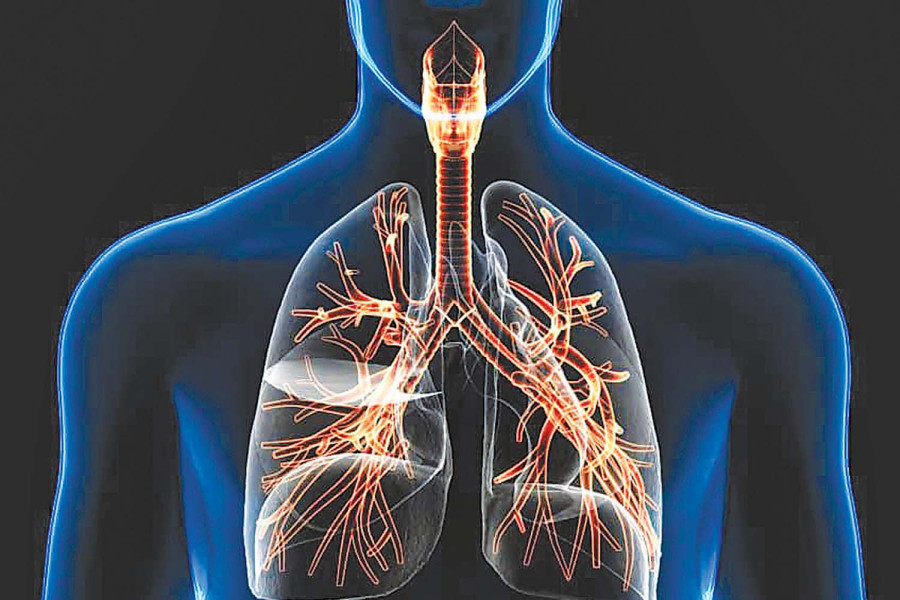Health
As season changes, number of patients with respiratory illness up
Doctors advise elderly people and immunocompromised to take flu shots at the earliest.
Arjun Poudel
Winter season is yet to start, but the number of people suffering from respiratory illness has risen significantly in major hospitals in the Kathmandu Valley. Doctors say patients have been testing positive for influenza viruses A(H1N1), A (H3) and virus of B group.
“The number of patients suffering from respiratory illnesses has doubled in the last few days,” said Dr Raju Pangeni, consultant pulmonologist and chest physician at HAMS Hospital. “Those already suffering from asthma and respiratory diseases are getting severe due to new infections.”
October and November is the peak flu season in Nepal when thousands of people get infected with multiple respiratory viruses. Doctors said that along with influenza viruses A(H1N1), A (H3) and B group viruses, rhinoviruses and adenoviruses have been spreading in the country. They said that those already suffering from respiratory illness—asthma and others are at high risk of getting severe and dying.
According to the World Health Organisation’s Global Influenza Surveillance, dozens of influenza cases have been reported in Nepal since the start of 2023. Infection of A (H3), also known as Hong Kong flu, A(H1N1), also known as swine flu, influenza B of Victoria lineage, and influenza B lineage undetermined are among the viruses detected in the country.
“We have found an entire family suffering from respiratory illnesses,” said Pangeni. “Patients report to us that one of the members of the family got infected first and then all members got infected. We have admitted some serious patients with respiratory illness and damaged lungs in intensive care.”
Doctors at the Kanti Children’s Hospital, the national referral centre for paediatric care said the number of patients suffering from respiratory illness have risen significantly of late. They also said that the infection is not only limited to children, but parents too are sick.
“Small children have been infected either from schools or from home,” said Dr Ram Hari Chapagain, spokesman of Nepal Paediatric Society.
Officials at Patan Hospital also said that the number of patients suffering from respiratory illness have risen noticeably of late.
“We have expected more cases in the coming days, season change has just started,” said Dr Ravi Shakya, director at the hospital.
Multiple doctors the Post talked to said that the influenza B virus, whose lineage is undetermined and has been rising alarmingly, is a matter of concern, as undetermined lineage of virus indicates mutation in the virus variant.
They said that the number of people infected with seasonal influenza could be far more than what is recorded, as all cases do not reach hospitals and undergo testing and even doctors do not think necessary to carry out testing, as there is no specific treatment for the infection.
The seasonal influenza virus causes respiratory complications, which affect the lungs. It spreads quickly in communities. It can cause fever, cough, body aches, occasional vomiting, diarrhoea and pneumonia.
Experts say early diagnosis is crucial to prevent infection. Patients recover early if treated on time. Experts also said that both the severity of the disease and deaths increase if seasonal influenza cases are not diagnosed on time.
“Despite availability of the influenza vaccine in Nepal, very few people opt to get vaccinated,” said Pangeni. “All people above two years old should take the vaccine. Children are vulnerable to influenza infection as they go school, and elderly people with underlying conditions are at risk of getting severe and dying from infection.”
However, people from both groups do not get priority, as children generally do not get severe and people give little priority to elderly people in Nepal. Doctors say those who can afford it should take the vaccine.




 8.12°C Kathmandu
8.12°C Kathmandu














